Ice season has finally arrived and anglers all over the country are already getting out onto the hardwater. Though the hardwater is looked forward to by anglers, first-responders can often come to dread this season as too-eager anglers flock to unsafe ice and inevitably fall through – putting all those involved in serious danger.
To avoid being one of these cases, Fish’n Canada has put together a guide to ice safety to help ensure you get home from the lake this season. Here are some of the key components of a safe and enjoyable ice fishing season!
Understanding Ice Thickness

Ice thickness is a contentious topic during ice season, with forums filling up with arguments over the strength of early ice and misinformed anglers falling through in areas that should have never been fished. To clear up some of the confusion, here is a guide to understanding ice strength and thickness, released by the Greater-Grand Sudbury Police.

As seen in the graphic above, 4 inches is the absolute minimum amount of ice that anglers should look for when heading out onto the lake. This amount of ice can hold roughly 800lbs, more than enough (maybe…) for you and about three of your fishing buddies plus gear.
For those with sleds and ATVs, you will be looking for at least 5 inches to make sure you, and your expensive machines, don’t end up at the bottom of the lake. This amount of ice can support around 1200lbs, much more than the average sled which weighs in at around 400lbs.
Finally, for those looking to fish in luxury and bring the car or truck onto the ice, wait for the lake to build around 8-15 inches of ice, depending on the size of your vehicle. For me personally, unless insurance plans become more forgiving, 15 inches is my target number.
Not All Ice Is Equal!
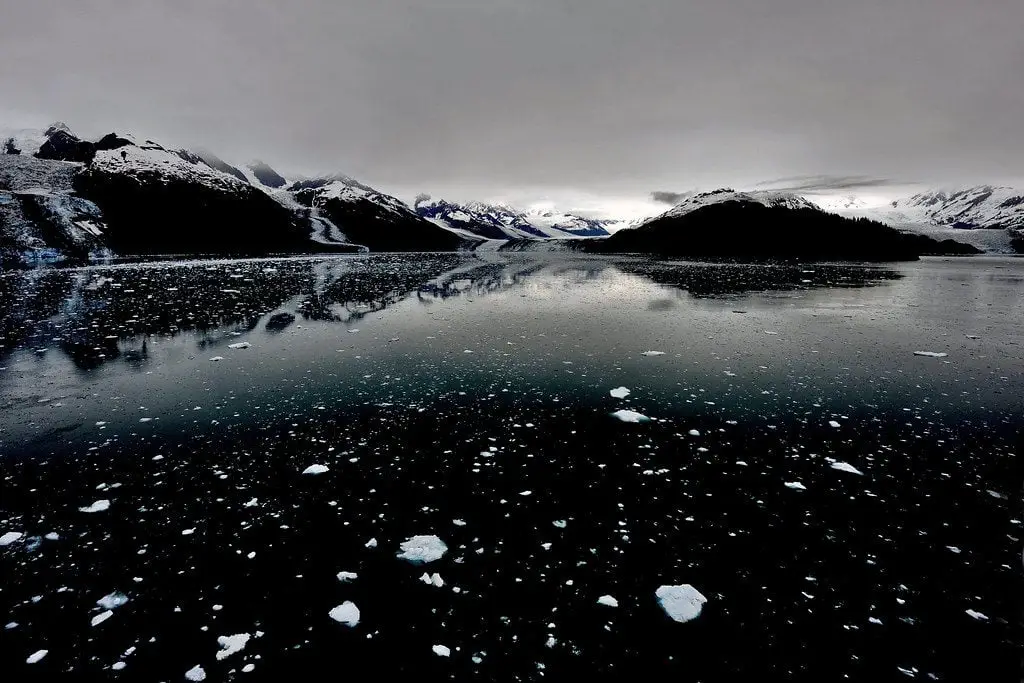
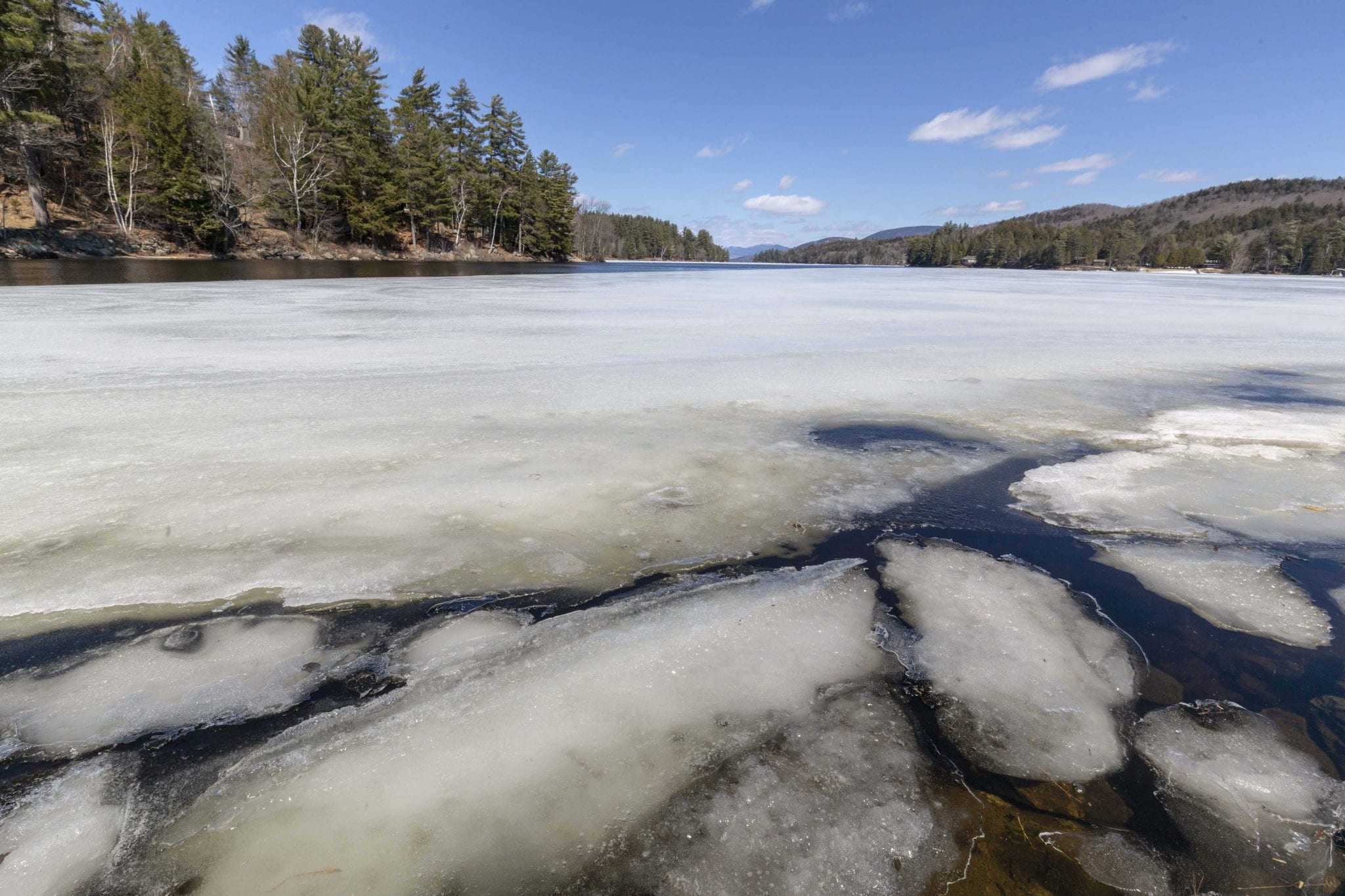
When looking at the numbers mentioned above, it is important to remember that these weight capacities are based on fresh, clear ice. This is what many refer to as black ice – the stuff so clear you can see fish swim beneath it and so slippery it requires you to wear cleats.
The reason that this ice is so clear and smooth is because of the absence of air pockets and snow within it. This is the stuff that forms on calm, snow-free, frigid days when nothing can get between the layers of ice as they freeze.
Ice that forms under snow or on milder days, on the other hand, does not get this uniformity. This ice is often white in colour, looking little different from the snow above, and is significantly weaker than the ice below it. A good example of this can be seen in the image below:
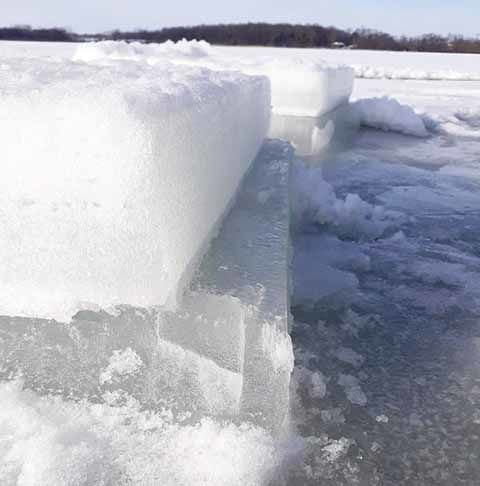
The situation pictured in this photo will be a common sight for those who ice fish, especially late in the season, with a strong layer of clear ice sitting below a weak layer of spongy, white ice. When dealing with layered ice like this, assume that the white ice isn’t even there and only judge the ice’s safety by the clear layer.
If you have 4 inches of clear and 2 inches of white, for example, you are not on 6 inches of ice and you should base your decisions as if the ice was only 4 inches and capable of supporting around 800lbs.
Do Your Homework
Just like any other kind of fishing, a safe and successful day on the ice requires a bit more than just showing up at the lake – a little bit of homework is needed. Boat launches are no longer a concern once things freeze over but access is still something to consider and some areas are much safer than others. Here are a few things to consider when scouting out safe areas to access your lake of choice:
Know where the current is
Areas with current can provide some excellent fishing, but they can also be extremely dangerous to access.
Moving water is great at maintaining a steady temperature and the constant movement makes them some of the last areas to freeze and the first areas to lose their ice. This makes them incredibly dangerous during the first and last days of the season.
To find current, I typically use Google Earth to identify river mouths and outlets. If you’re fishing a major waterway, such as the Bay of Quinte, the flow rates of these rivers can often be found online and can help you determine how safe the ice will be in the area.
If you’re fishing smaller lakes, determining how strong the current is can often be a bit trickier. The size of the river is often a good indication, but anglers can also use their charts to get some insights as well. Rivers that carve deep channels in the lake bottom often mean that a strong current is (or, at least, was) present in the area. If the lake you are fishing feeds into lakes or rivers at multiple ends, chances are that the current will be stronger as well.
Make Connections

Since ice can be variable from lake to lake, making connections in the areas you are planning to fish is always a good idea to ensure it is safe to head out.
Tackle shops are one of the best places to make these connections. A simple phone call is often all it takes to get a quick breakdown of local ice reports and to find out what is biting. Out of courtesy, if the shop is nice enough to give you advice, make sure you stop in to buy your bait on the way through town.
For those who’d prefer the online route, forums and Facebook groups are also good places to try. Keep in mind that the feedback in most Facebook groups tends to be negative, especially when joining a group from “out of town”. To keep the abuse to a minimum, be sure to emphasize that you are not looking for spots when asking how a lake is – you are simply looking for ice conditions. Though it may require some comment-wading and some thicker skin, a few people in every group or forum will often provide the answers you’re looking for and can be a big help when travelling away from home.
For a more pleasant experience, try larger, less local groups such as the Fish’n Canada Fan Club. People tend to be much more willing to help in these larger groups and may be able to point you in the right direction.
Ice Safety Gear
Now that we understand ice conditions and have found our lake, it is time to pack the sled. Here is some of the ice safety gear I am not leaving the house without.
Floatation Suit
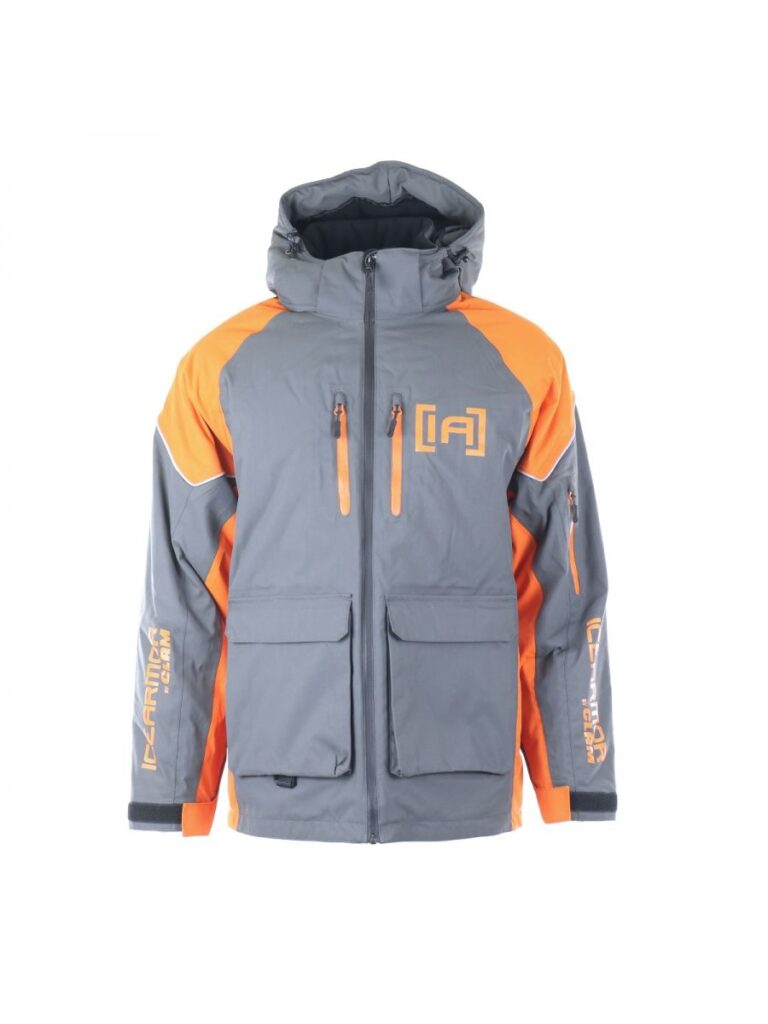

Floatation suits are by far the number one safety item on my list when it comes to ice fishing, especially early in the season. These suits are essentially lifejackets for ice fishing, ensuring your head stays above the water if the worst-case scenario was to occur.
In addition to providing buoyancy if you were to fall through the ice, these suits are also a great piece of mind for both you and your loved ones. No longer do I get an ear-full when venturing out during early ice season and I now feel much more confident taking those first few steps of the season.
Companies such as Mustang and Clam make great suits that are as warm and comfortable as they are buoyant. As with all float suits, these options can often be a bit on the pricey side but will be worth every penny if something were to ever go wrong.
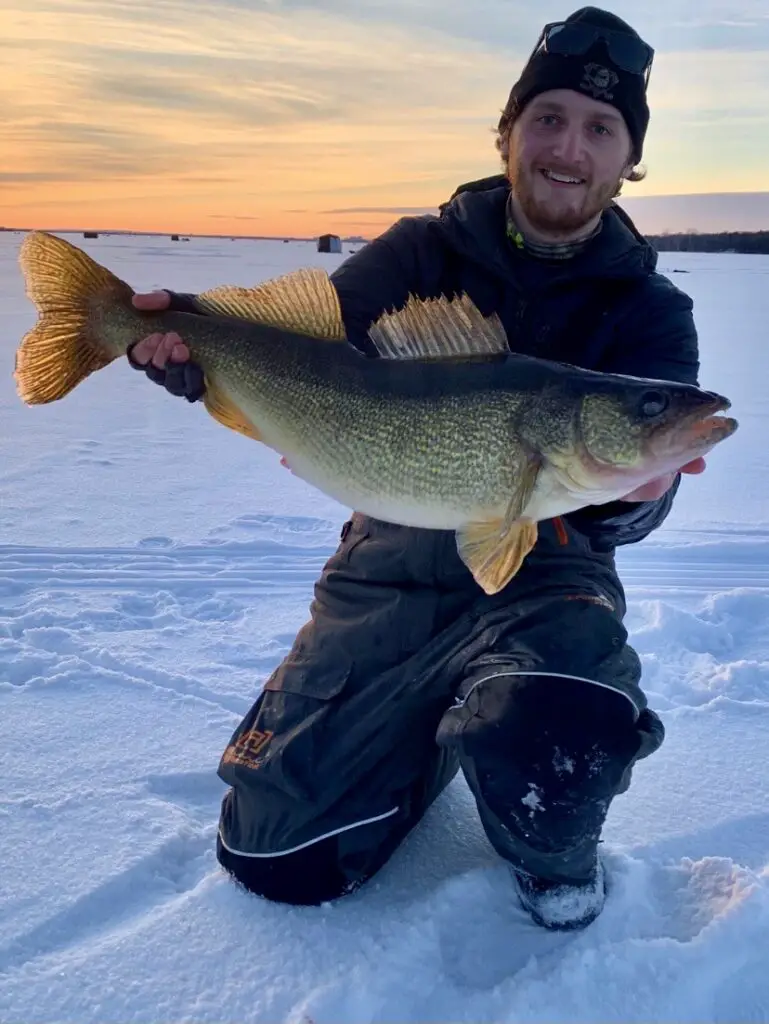
Ice Spud

The second piece of safety equipment I always have with me is an ice spud. These are essentially just big, heavy walking sticks used to test the ice in front of you as you walk. It is important not to be gentle when testing the ice. I always give the ice a few strong hits every four or five steps to ensure I am not walking onto thin ice. Three good hits will often penetrate about three or four inches of ice so you will at least know that what you are about to step on can support your weight. If it only takes one or two hits to break through, slowly turn around and spud your way back to safe ice.
Ice spuds can be found at just about any sporting goods store and are relatively affordable. If you are looking for a cheaper method, that axe you have lying around the garage can achieve the same goal, however, you will want to be much more careful that your swings are accurate and not near any toes.
Ice Picks
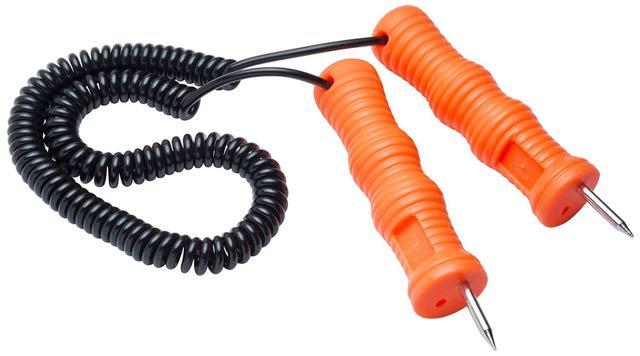
Finally, the last piece of safety equipment I always have with me when heading out onto the ice is a pair of ice picks. These are items that you hope you never have to use but are something you’ll be glad you carried if you were to end up swimming in the ice.
Designed with a pointed end and strong plastic handle, these tools ensure you are able to grip the ice enough to get out should you ever fall in. These picks are also often connected to a flexible cable, making them easy to wear around your neck when they are not in use but readily accessible if you were to fall through.
Ice picks are available at any store that sells ice fishing equipment and often come standard with many floatation suits. If you’re looking to get extra-Canadian this season, I have also built my own using an old wooden hockey stick and some strong nails. Simply cut the hockey stick into two six-inch pieces, hammer a nail into the end, cut the head off the nail, attach a rope, and you have your very own Canadian ice picks!
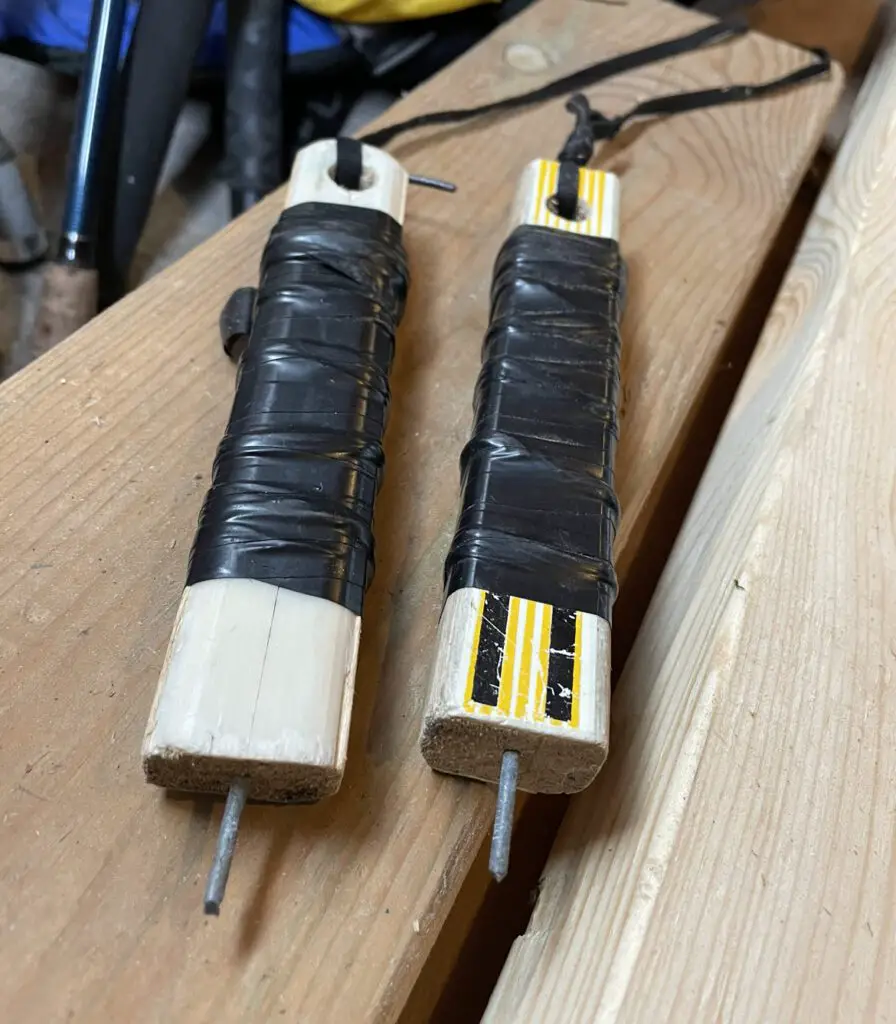
How to get out of the ice
Finally, if we’re going to talk about ice safety, we need to address what to do if the worst-case scenario arises. With two of the most prominent fishing personalities working just down the hall from me, I brought the idea to Ang and Pete and suggested that they should get out onto the ice, into the water, and make their very own self-rescue video.
Surprisingly, they declined.
So to save Ang, Pete, or I from having to get in the lake and demonstrate it for ourselves, here is a great, unaffiliated, YouTube video demonstrating how to get yourself out of the ice:
Conclusion:
The dangers of ice fishing should not be overlooked, but should also not keep you from enjoying this incredible northern past-time. With a bit of planning and the right equipment, fishing during the winter can be just as fun and safe as it is during the summer!
See you out on the ice!



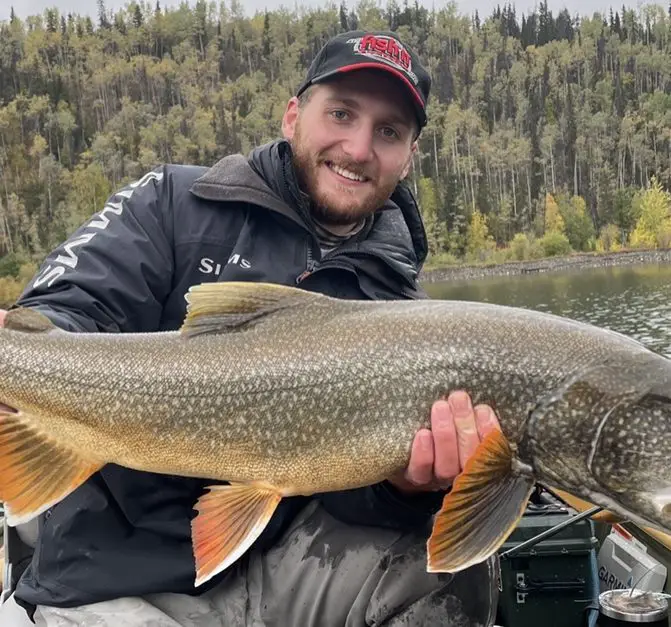


15 Responses
Great Contest, would love to win this as we do a lot of ice fishing.
Thanks, Arlene! Good luck to you!
GREAT CONTEST AGAIN…..
Good advise, Everyone should read this, It my save your life. Be safe and enjoy the fishing.
Thanks, smallfry29! Good luck this season!
Man can I use this…Very cold snowy weather in Alberta right now
Thanks for reading, MECHBULL7! Have a great season!
nice saftey tip
Thanks, Holly!
Great article on safety equipment and ice thickness. Goodluck everybody!
Thanks, Peter! Good luck this season!
HOPING EVERYONE HAS A SAFE,HEALTHY,& HAPPY SEASON.
Great safety video. Can’t believe this guy went in that water three times. Kudos to him!
Wishing everyone a safe and joyful holiday season.
Great information Dean. A comprehensive blog that should become an annual post. It never ceases to amaze me how many anglers ignore these scientific facts, year after year.